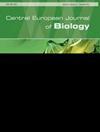Metal Bioaccumulation of Mytilaster lineatus (Gmelin, 1791) Collected From Sinop Coast in the Southern Black Sea
引用次数: 2
Abstract
ABSTRACT Objective: Metal bioaccumulation of the bivalve Mytilaster lineatus, based on different seasons and stations was investigated in Sinop Peninsula of the Black Sea. Soft tissues of mussels from Gazibey Rock and Icliman were taken during the spring and the summer of the year 2016 and were analyzed for Hg, Cd, Pb, Cu and Zn. Methods: The soft tissues of the mussels digested with Suprapur® HNO3 (nitric acid) using a Milestone Systems, Start D 260 microwave digestion system. The accuracy and precision of the method was verified by the simultaneous analysis of the certified reference materials NIST 2976 (mussel tissue) for the samples. The Inductively Coupled Plasma–Mass Spectrometer (ICP-MS), Agilent Technologies, 7700x was used for metal analyses. Results: Results showed that higher concentrations of almost all metals in Icliman than those in Gazibey Rock. However, no significant differences were detected between seasons except for both Cu and Zn. The metal amounts of M. lineatus ranged between 0.024-0.035, 0.054-0.072, 0.13-0.25, 0.64-0.85 and 6-20 mg kg-1 wet wt. for Hg, Cd, Pb, Cu and Zn, respectively. Conclusions: The measured metals in both sampling areas did not exceed the threshold set by the European Commission and Turkish Food Codex. The results of this study also confirmed the potential of M. lineatus to be used as bio-indicators of heavy metal pollution.黑海南部Sinop海岸收集的Mytilaster lineatus (Gmelin, 1791)的金属生物积累
摘要目的:研究黑海锡诺普半岛不同季节、不同站位双壳类动物线密螺(Mytilaster lineatus)金属的生物积累。2016年春、夏采集加济贝岩和伊克利曼贻贝软组织,分析其汞、镉、铅、铜和锌含量。方法:采用Milestone Systems, Start d260微波消化系统,用Suprapur®HNO3(硝酸)消化贻贝软组织。通过对样品的认证标准物质NIST 2976(贻贝组织)进行同步分析,验证了该方法的准确性和精密度。电感耦合等离子体质谱仪(ICP-MS), Agilent Technologies, 7700x用于金属分析。结果:Icliman中几乎所有金属的浓度都高于Gazibey Rock。除Cu和Zn外,各季节间无显著差异。对汞、镉、铅、铜、锌的重金属含量分别为0.024 ~ 0.035、0.054 ~ 0.072、0.13 ~ 0.25、0.64 ~ 0.85和6 ~ 20 mg kg-1湿重。结论:两个采样区的金属含量均未超过欧盟委员会和土耳其食品法典规定的阈值。本研究结果也证实了线纹霉作为重金属污染生物指标的潜力。
本文章由计算机程序翻译,如有差异,请以英文原文为准。
求助全文
约1分钟内获得全文
求助全文

 求助内容:
求助内容: 应助结果提醒方式:
应助结果提醒方式:


